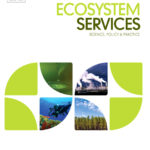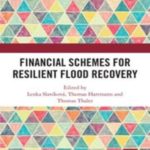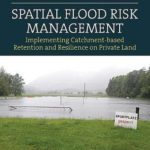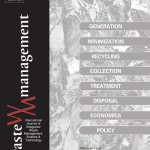
ReBioClim: REstoring urban streams to promote BIOdiversity, CLIMate adaptation and to improve quality of life in cities
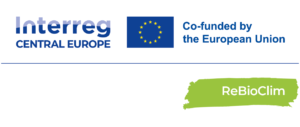 |
Supporting cities in planning restoration of small streams that will improve the quality of life of residents, increase biodiversity and contribute to climate change adaptation
The project focuses on the restoration of urban streams using nature-friendly solutions. Although many (scientific) studies show that revitalised streams bring many benefits (from flood mitigation, biodiversity restoration, cooling of cities to recreational and aesthetic functions), their restoration using nature-based solutions is still not a common practice in the context of urban areas. Indeed, in practice, stream restoration faces a number of obstacles. There is limited space in intensively built-up areas, complicated property rights to surrounding land, or a lack of public and stakeholder awareness of the benefits that restored watercourses provide. The aim of the project is therefore to help cities to simplify the planning and implementation of restoration measures by using interdisciplinary approaches, engaging the professional and lay public and exchanging experiences. The project involves scientific partners from Germany, Czechia, Slovakia, Poland and the Netherlands and the cities of Dresden, Jablonec nad Nisou, Senica and Poznan, where the knowledge gained in the project will be implemented in practice.
In the project, IEEP will be responsible for a work package aimed at integrating ecological, social, institutional and urban planning aspects of urban stream restoration.
| Funding Agency: | Interreg CENTRAL EUROPE 2021-2027 |
| Duration: | 6/2024 – 01/2027 |
| Contact person: | Jiří Louda, e-mail: louda@ieep.cz |
| Researchers: | Lenka Dubová, Jan Brabec, Lenka Slavíková etc. |
| In cooperation with: | Dresden University of Technology (Germany; Lead Partner)
Leibniz Institute of Ecological Urban and Regional Development (Germany) City of Dresden (Germany) Slovak University of Technology in Bratislava (Slovakia) Alcedo River Clinic (Slovakia) Town of Senica (Slovakia) Poznań University of Life Sciences (Poland) City of Poznań (Poland) Aquanet Retencja Sp. z o.o.(Poland) City of Jablonec nad Nisou (Czechia) Delft University of Technology (The Nederland) |
| Web-site: | Project ReBioClim website |
Climate_CRICES: Increasing Climate Change Resilience in Central Europe
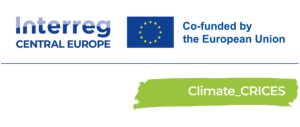 |
Supporting cities and regions in Central Europe to develop and implement climate change adaptation strategies
The aim of the Climate_CRICES project is to increase the capacity of public authorities to cope with the expected impacts of climate change, such as heat waves and drought, water scarcity and flooding, and impacts on biodiversity. The challenge addressed in this project is to make use of the big amount of environmental, water and meteorological data available both within public institutions and from so far practically unused data sources (e.g. remote sensing data). By bringing them together on a single multilingual platform, municipalities, regions, agencies and research institutions from Austria, Germany, Poland, Hungary, the Czech Republic, Croatia and Italy will be able to increase the resilience of rural and urban areas to the impacts of climate change through more efficient and accurate analysis and forecasting. In cooperation with partners in Poland and Germany, it will then be easier to address climate change adaptation issues on a cross-border basis.
As part of the project, IEEP will pilot the needs of the Liberec region and selected municipalities in the region, identify barriers to the development and implementation of adaptation strategies, and provide access to existing portals so that data can be integrated into a common Central European platform.
| Funding Agency: | Interreg CENTRAL EUROPE 2021-2027 |
| Duration: | 6/2024 – 11/2026 |
| Contact person: | Jan Macháč, e-mail: machac@ieep.cz |
| Researchers: | Štěpánka Truhlářová, Lenka Zaňková |
| In cooperation with: | Veneto Region (Italy; Lead Partner)
ARPAV – Regional Agency for Environmental Protection and Prevention of Veneto (Italy) Consortium for the Information System (Italy) Research Burgenland GmbH (Austria) Central Danube Development Agency Nonprofit Ltd. (Hungary) North-West Croatia Regional Energy and Climate Agency (Croatia) Leibniz Institute of Ecological Urban and Regional Development (Germany) Wrocław University of Environmental and Life Sciences (Poland) |
System of environmental-technical optimization of spatial parameters of agricultural land in the context of permanent efficient management
How to design an appropriate internal layout of agricultural land taking into account the ecosystem services provided.
The aim of the project is to develop methods for optimising the internal layout of agricultural land, including zonation methods within soil sub-blocks (LPIS) in the context of effective application of precision agriculture and ensuring the diversity of agricultural landscapes. The optimisation also includes the design of environmental-technical areas where there is a requirement to enhance the environmental functions of the landscape. The methods must take into account the technical requirements of agricultural techniques, crop rotation principles, economics, but also aspects of the functional natural environment, soil and water conservation. The project will result in a set of methods for optimising the internal layout of LPIS, including an assessment of their impact on agrotechnical operations, ecosystem services, and in terms of future agricultural requirements, i.e. the possibility of CO2 fixation, and increased landscape stability.
The IEEP team will be responsible for the economic assessment of the measures in the project. An integral part of this will be the consideration and valuation of externalities in the form of ecosystem services and costs of the measures. By implementing economic methods (cost-benefit analysis/multicriteria analysis) to determine the overall/sub-impacts, the suitability of the different options for implementing the measures will be assessed.
| Funding Agency: | Ministry of Agriculture: public competition of the Programme ZEMĚ II announced in 2023 |
| Duration: | 03/2024 – 09/2026 |
| Contact person: | Jan Macháč, e-mail: machac@ieep.cz |
| Researchers: | Marek Hekrle, Lenka Zaňková |
| In cooperation with: | Výzkumný ústav meliorací a ochrany půdy,v. v. i. (lead partner)
České vysoké učení technické v Praze Česká zemědělská univerzita v Praze |
Assessment of organic and conventional agriculture in terms of their impacts on ecosystem services to support strategic and decision-making processes
Comparison of the impact of conventional and organic farming on the provision of ecosystem services and formulation of arguments for adjusting the setting of support for organic farming.
The project aims to compare the impact of conventional and organic farming on the provision of ecosystem services, using own research, available data and literature. Ecosystem services whose provision is crucial both for the long-term resilience of agrarian ecosystems and for maintaining the resilience of the whole environment will be quantified. By quantifying ecosystem services in biophysical units (in conventional and organic farming) and their subsequent assessment, including life cycle assessment of selected agricultural products, the hitherto insufficiently under-considered added value of organic farming production in relation to the ecosystem services will be analyzed. Arguments and recommendations for (adjusting) the setting of organic farming support in accordance with the Czech Action Plan of organic farming and other related documents will be formulated.
| Funding agency: | Ministry of Agriculture of the Czech Republic |
| Duration: | 01/2023–12/2025 |
| Contact person: | Jiří Louda, e-mail: louda@ieep.cz |
| Researchers: | Jan Macháč, Lenka Dubová, Marek Hekrle, Jan Vávra |
| In cooperation with: | Crop Research Institute
University of South Bohemia in České Budějovice Global Change Research Institute of the Czech Academy of Sciences |
Factors Affecting Governance Innovations for Ecosystem Services Provision: Insights From Two Self-Organized Forest Communities in Czechia And Slovakia
Analysis of the role of self-organized forest communities in innovative forest governance and sustainable forest ecosystem services provision.
Abstract: Self-organized forest communities (FCs) have governed common forests in a sustainable way in Europe for centuries. In most Central and Eastern European countries, this tradition was interrupted by the communist regime in the second half of the 20th century. The social demand for non-provisioning forest ecosystem services (FES) is increasing nowadays and FCs could play a significant role in their provision. However, FCs are currently facing many challenges, e.g., climate change, loss of income or changing social values. The paper investigates (i) the role of self-organized FCs in innovative forest governance and sustainable FES provision and (ii) specific conditions and fostering/hindering factors affecting implementation of innovative forest governance schemes by FCs in CEE.
Factors influencing forest governance innovations in two FCs in Czechia and Slovakia were identified and discussed during workshops, focus groups and semi-structured interviews with their members and stakeholders. It was shown that self-organized FCs could play a pioneering role in implementation of innovations as they are open to novel solutions and have the ability to flexibly and collectively respond to new challenges. Emphasis on non-provisioning FES, cooperation of actors, strong leadership and introduction of financial compensations are key fostering factors. In contrast, factors related to institutional settings (e.g., current legislative environment) are perceived as hindering.
Citation and link: Louda, J., Dubová, L., Špaček, M., Brnkaláková, S., Kluvánková, T. 2023. Factors affecting governance innovations for ecosystem services provision: Insights from two self-organized forest communities in Czechia and Slovakia. Ecosystem Services, 59, 101497. https://doi.org/10.1016/j.ecoser.2022.101497
Land Policy for Flood Risk Management—Toward a New Working Paradigm
Recommendations for better flood risk mitigation via land use changes
Abstract: Flood risk management (FRM) aims to integrate necessary technical measures with environmental and societal approaches. Focusing on the process and governance of how to plan, implement, and maintain solutions therefore becomes essential. Among the different stakeholders, landowners are a key group to be considered. This contribution elaborates on the interconnections between land policy, FRM and private land ownership. It is based on the European COST Action network LAND4FLOOD, which brings together academics and stakeholders from various disciplines and more than 35 countries. We argue for a less project oriented and more process oriented approach, a focus on land management and more emphasis on small-scale measures. This represents a break with some of the recent working paradigms of FRM.
Full citation: Potocki, K., Hartmann, T., Slavikova, L., Collentine, D., Veidemane, K., Raska, P., Barstad, J., Evans, R. (2022). Land Policy for Flood Risk Management—Toward a New Working Paradigm. Earth´s Future, 10, e2021EF002491.
Financial Schemes for Resilient Flood Recovery
How to design financial instruments in a flood recovery period and in the long run?
Financial schemes for flood recovery, if properly designed and implemented, might increase flood resilience. However, options for the increase of flood resilience during the recovery phase are to a large extent overlooked and the diversity of existing schemes shows that there has been a lack of consensus on how to achieve resilient flood recovery.
Financial Schemes for Resilient Flood Recovery investigates how the implementation of financial schemes (government relief subsidies, insurance schemes, buy-outs, etc.) might increase flood resilience. The chapters included in this edited volume address the following questions: Shall government relief subsidies exist when there is flood insurance in place, and, if so, how might they both be coordinated? Where (or how) to decide about build back better incentives and where to go for planned relocation programs? What is the distributional equity of financial schemes for flood recovery, and has it been sufficiently treated?
The book covers different approaches to flood recovery schemes with specific intervention rationales in different countries. Empirical evidence provided clearly shows the great diversity of financial flood recovery schemes. This diversity of state-funded schemes, private-based insurance schemes, and hybrids as well as planned relocation schemes indicates a lack of a consistent and strategic approach in flood risk management and flood resilience about flood recovery.
The chapters in this book were originally published in the Environmental Hazards.
Full citation: Slavíková L,, Hartmann, T., & Thaler, T. (2021). Financial Schemes for Resilient Flood Recovery (1st ed.). Routledge, Taylor & Francis Group.
Spatial Flood Risk Management: Implementing Catchment-based Retention and Resilience on Private Land
The book calls for the interconnection of land policy instruments and flood risk management in Europe.
Centralising the role of land and landowners, Spatial Flood Risk Management brings together knowledge from socio-economy, public policy, hydrology, geomorphology, and engineering to establish an interdisciplinary knowledge base on spatial approaches to managing flood risks. The final LAND4FLOOD COST Action book brings together more than 25 authors from different disciplines and different European countries to discuss existing challenges.
Open Access book is available here: Hartmann, T., Slavíková, L., Wilkinson, M. (2022): Spatial flood risk management. Edward Elgar.
Mixed-method approach incorporating Geographic information system (GIS) tools for optimizing collection costs and convenience of the biowaste separate collection
Construction of the economic model for the organic waste transport optimalization.
Abstract: Nowadays, dealing with organic waste (or biowaste) remains a global phenomenon. Especially developing countries worldwide generate more than 50 percent organicwaste. In the European Union (EU) with a share of 34%, biowaste is a dominantfraction of the municipal waste (EEA, 2020). Therefore, separate collection at source and environmentally sound treatment of biowaste are of key importance. An intensive optimisation of biowaste separate collection is needed to balance demands of municipal representatives and households’ needs. Based on the mixed-method approach we developed a MCDA model complemented by expert-based weighting assessment and combined with the GIS localisation tools aimed at the optimisation of biowaste container locations that reflects various spatial conditions, preconditions for the localisation of containers and its cost intensity. We concluded that changing the density of containers, distance between the address point and container, and selecting container locations that respect the habits of households and demands of the collection technology significantly affect the total and collection costs. We confirmed that the decreases in the total costs were not significant for maximum walking distances of over 95 m, and would approach zero for distances of over 230 m. When the maximum walking distance exceeds 268 m, 40% of all inhabitants would not participate in the system as it would be inconvenient for them. A recycling campaign is needed to increase their willingness to participate in the system. We provided arguments for decision-makers how to balance convenience of the biowaste separation system and collection costs by proper localisation of biowaste containers.
Citation and link: Slavík, J., Dolejš, M., & Rybová, K. (2021). Mixed-method approach incorporating Geographic information system (GIS) tools for optimizing collection costs and convenience of the biowaste separate collection. Waste Management, 134, 177–186.
Analysis of the presence of tobacco products in littering and the communal household waste
The data on the amount and types of tobacco products in littering and household waste helps to define boundaries of the extended producer responsibility.
As part of EPR schemes, some manufacturers of one-way plastics are obliged to find ways to share the cleaning costs and thus help the local government to finance the cleaning activities or possibly information and communication campaigns. However, a prerequisite for creating computational models is knowledge of the proportion of cigarette butts and other smoking products in littering. Especially within the localities for which littering behavior is typical – shopping streets and squares or natural environments.
| Funding Agency: | Philip Morris ČR a.s., British American Tobacco (Czech Republic), s.r.o., JT International spol. s r.o., Imperial Tobacco CR, s.r.o. |
| Duration: | 9/2021 – 06/2022 |
| Contact person: | Jan Slavík, e-mail: slavik@ieep.cz, jan.slavik@ujep.cz |
| Researchers: | Jan Slavík, David Hrabina, Zdeňka Ilková, Blanka Bannertová, Ilona Faitová, Alice Charvátová, Veronika Rožcová, Ladislav Petrovič |
| In Cooperation with: | GREEN Solutions, s.r.o. |
| Outputs: | Internal report for the funder. |


